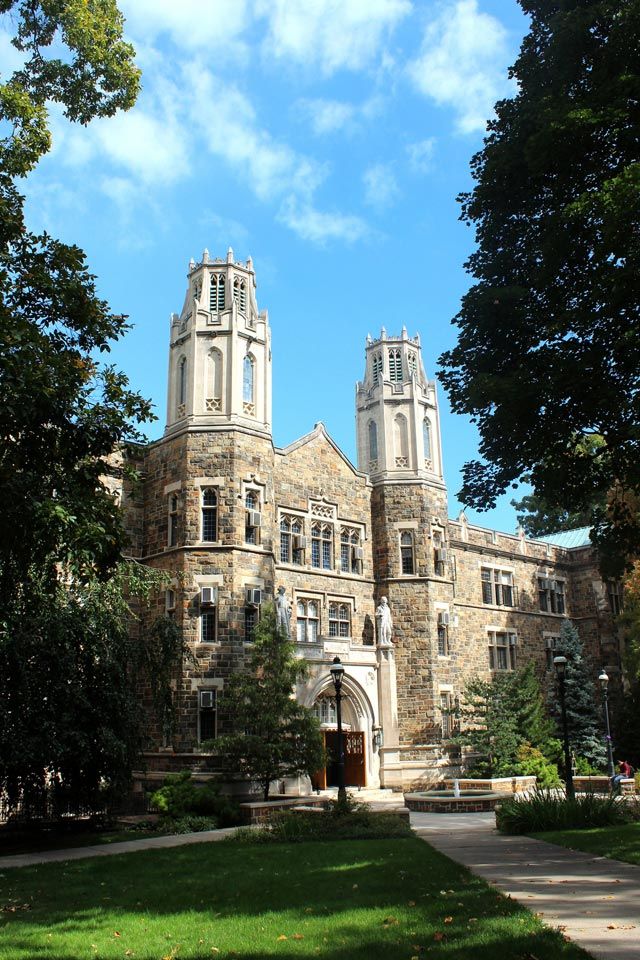Two researchers trace their ties back seven decades
Robert Stout and John Gross have set a longevity record for collaboration that may not soon be equaled.
Now 96 and 88 years of age, the two metallurgists recently developed and tested a new steel alloy that promises significant savings in bridge construction and repair costs.
Their accomplishment concludes a five-year project funded by the Federal Highway Administration (FHWA).
It caps 20 years of research supported by FHWA, the U.S. Navy, the Welding Research Council and the American Iron and Steel Institute.
And it comes 70 years after the two men began a lifelong association in Lehigh’s department of metallurgical sciences (now the department of materials science and engineering).
In 1941, Gross enrolled in a metallurgy class taught by Stout, then a Lehigh instructor.
Stout went on to earn a Ph.D. from Lehigh and serve more than four decades as professor and department chair of materials science and engineering, and also as dean of Lehigh’s graduate school.
Gross earned his B.S., M.S. and Ph.D. from Lehigh, served with Stout 14 years on Lehigh’s faculty and then took a position with U.S. Steel, where he once hired Stout as a consultant.
A more corrosion-resistant steel
In 1991, the Navy awarded Lehigh’s ATLSS (Advanced Technology for Large Structural Systems) Center $5.5 million to study the feasibility of using high-performance steels in submarine hulls. Stout took charge of metallurgical testing to determine the steels’ usefulness in bridges, and asked Gross to be his consultant.
A decade and a half later, working for FHWA, the two researchers developed a copper-nickel-blend plate steel with greater yield and tensile strength, more durability and fewer maintenance requirements than conventional steels. The new steel, HPS-100W, was used in the construction of a bridge in Nebraska.
In their latest project, Gross and Stout improved the durability of corrosion-resistant steel for highway bridge construction. They developed and tested 23 different steel compositions before confirming the superiority of an alloy with 2 percent copper and 2 percent nickel.
Besides superior corrosion resistance, the researchers say the alloy outperforms most conventional steels in ductility, toughness, lifecycle costs, weldability and mechanical properties.
Stout says the alloy will make a significant dent in bridge-repair costs while reducing the traffic delays and lost productivity caused by bridge maintenance.
According to an FHWA report, corrosion costs all U.S. bridges, including steel as well as conventional reinforced concrete structures, an average of $8.3 billion a year in replacement and maintenance costs.
Stout and Gross want to produce a commercial batch of the new steel and conduct large-scale prototype tests to confirm the alloy’s performance. Ultimately, their goal is to build three highway bridges.
“We’re optimistic we’ll get funding for these final steps,” says Gross. “And I’m planning to manage the follow-on tests.”
Passing the torch
Gross and Stout have mentored a number of graduate students who have gone on to careers in industry and research.
Kate Arico ’06, ’07G, now a solutions engineer for Informetric Systems Inc., developed a multivariable regression analysis that related the composition of experimental steels to their corrosion performance. The analysis became the subject of her M.S. thesis in industrial engineering.
“I learned a great deal about the steel industry from both Dr. Gross and Dr. Stout,” says Arico, a softball player who also benefited from an athletic scholarship endowed by Gross.
“Dr. Gross is one of the most generous people I’ve ever met. He did everything in his power to make my Lehigh experience wonderful.
“Dr. Stout was always willing to share his knowledge with me. He taught me how important it is to listen and respect your colleagues.”

